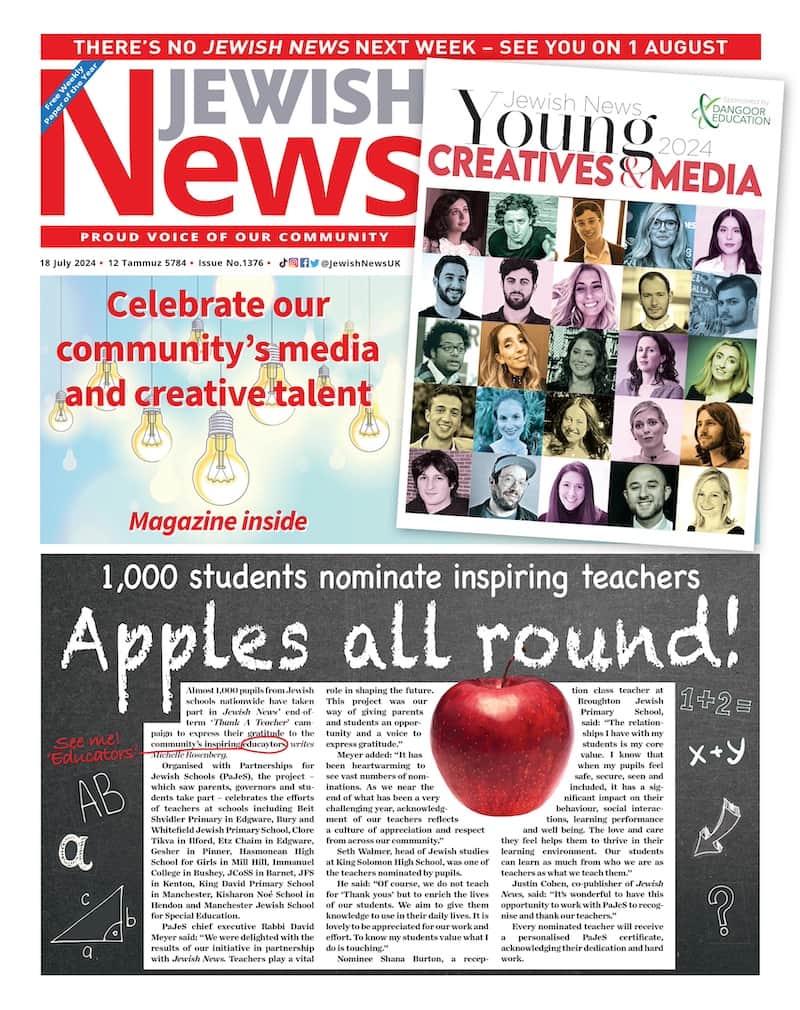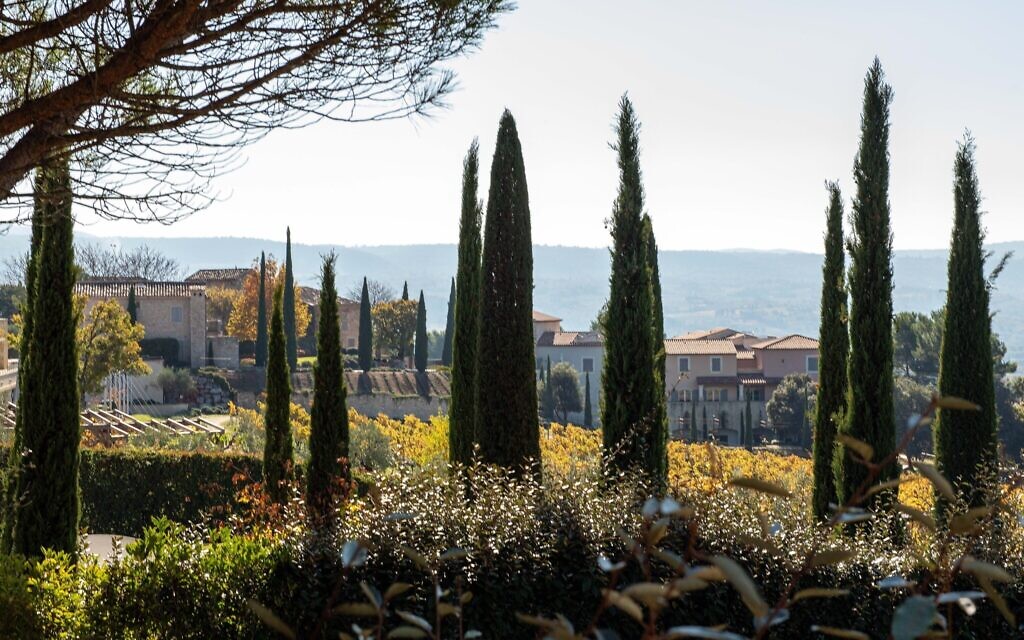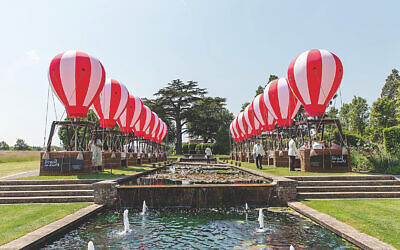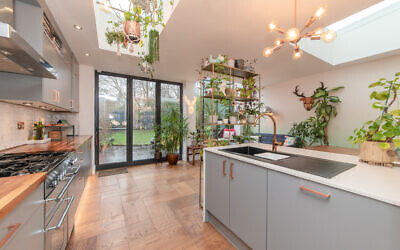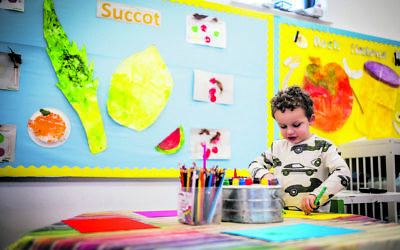Autumn sunshine in Provence
Summer is over but heading south to the home of lavender fields and rose wine keeps it going right through November
Every sunny day in October is a jewel to treasure, but if you want to cling on to summer longer, you’ll need to head south. Autumn is mild and long in Provence, in south-eastern France, with a kaleidescope of colours lit by the warm sunshine, the wine harvest in full throttle and temperate evenings well into November.
In the Luberon region, an hour’s drive from Marseille airport, long roads traversing verdant countryside eventually narrow into a majestic sweeping driveway lined with cypress trees. This is the approach to Coquillade Provence Resort & Spa, formerly an 11th century hamlet owned by Cisterian monks. Swiss entrepreneur and cycling enthusiast Andy Rihs bought it and developed it into a unique retreat that opened in 2008. It was extended in 2016 with more rooms and a spa, and five new interconnecting suites are due to open early next year. These will have private access to the spa and are billed as offering an idyllic home away from home. If I had a home this idyllic I’m not sure I’d ever leave it.
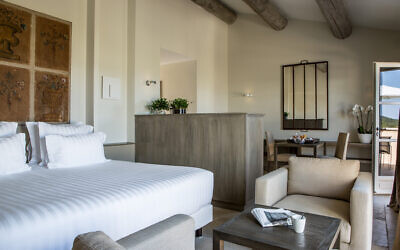 The elegant resort is designed like a village, with each of 63 bastides (rooms) having its own front door to the ‘street’. The 100-acre estate is lush with lavender fields, vineyards and even a forest; la tranquillité that settles on your shoulders when you arrive eventually trails all the way down to your toes by the time you leave.
The elegant resort is designed like a village, with each of 63 bastides (rooms) having its own front door to the ‘street’. The 100-acre estate is lush with lavender fields, vineyards and even a forest; la tranquillité that settles on your shoulders when you arrive eventually trails all the way down to your toes by the time you leave.
Get The Jewish News Daily Edition by email and never miss our top stories Free Sign Up
While the older rooms are more country chic and the new ones more modern and earthy, space, refinement and unbridled luxury pervades them all, plus wooden beams, exposed stone and huge beds. A lovely post-Covid touch is that every guest receives a brand-new goose down pillow, which they can take home or leave behind to donate to a charity.
The day starts with an elegant buffet breakfast; this being France, naturally the bread and pastries are exceptionally good, but I tried to veer towards lovely fresh omelettes that are cooked in front of you, and the plentiful choice of cheese, fruit, cereals and yogurt.
Andreas Rihs was a passionate cyclist and established a cycling centre on the property which is extremely highly regarded and makes the resort a destination for many cycling holidays. It offers racing bikes, mountain bikes, road bikes, electric bikes, children’s bikes and even carriages for the little ones, so that was my husband sorted for the morning – he set off on a three-hour tour of the estate and nearby villages with a guide, while I made my way to the stunning indoor pool for an aquafit session with a personal trainer. I’m not sure how much the session did for my fitness levels but it was a good opportunity to practice counting to 20 in French.
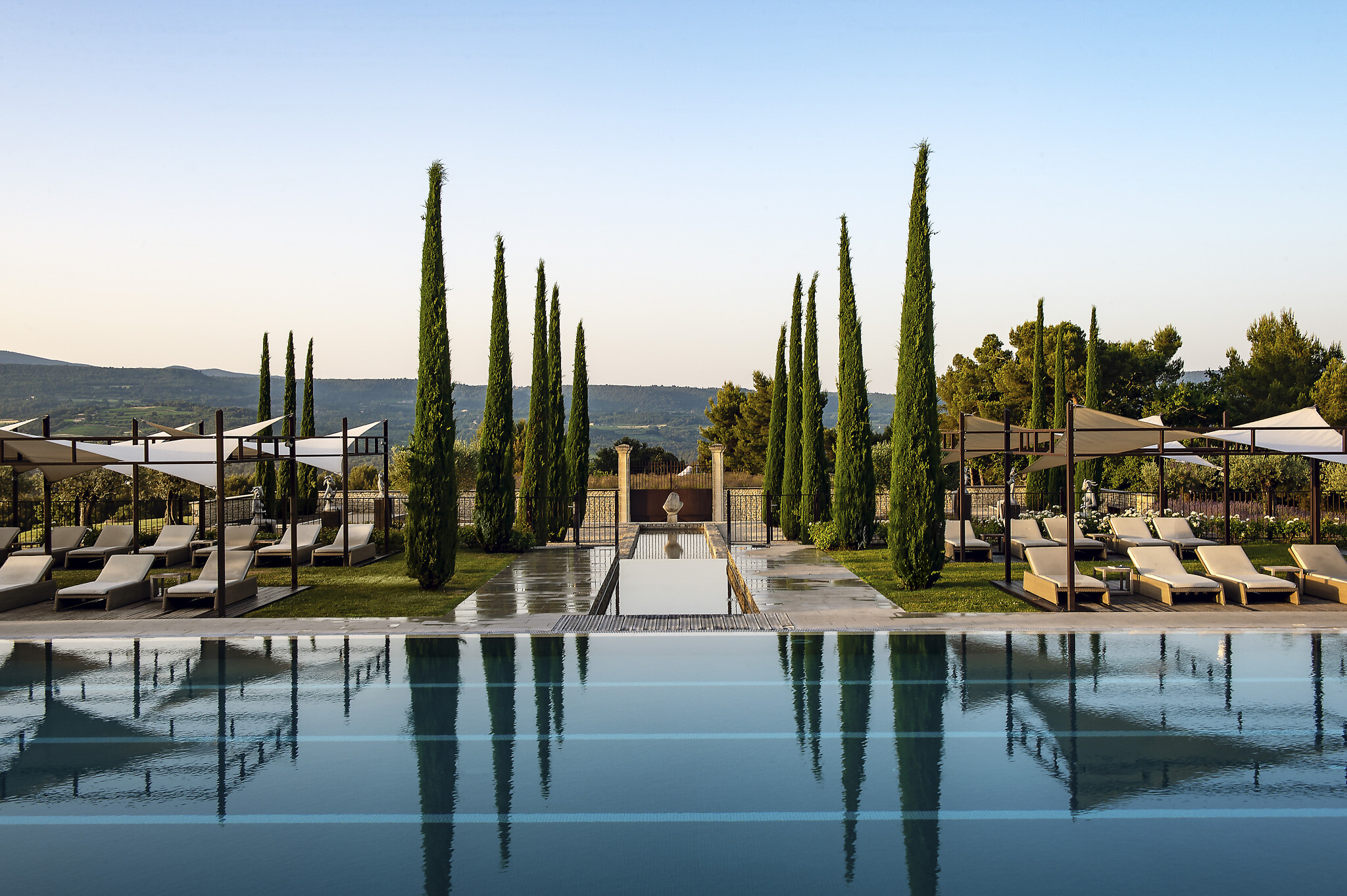 There are two magnificent outdoor pools too and after a morning of activity we spent a lazy afternoon by one of them. Cushioned sun loungers are positioned under canopies for shade – you just pull them forward if you want to sunbathe. I love this idea.
There are two magnificent outdoor pools too and after a morning of activity we spent a lazy afternoon by one of them. Cushioned sun loungers are positioned under canopies for shade – you just pull them forward if you want to sunbathe. I love this idea.
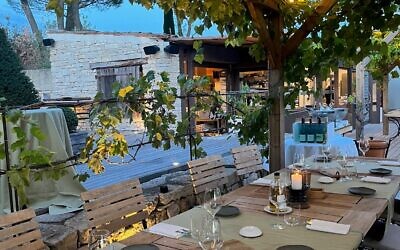 As the sun goes down, dinner is set up on a terrace under a pretty leaf-lined canopy at Les Vignes, where local produce and vegetables from the estate are used to create beautiful Provençal Mediterranean dishes. Executive chef Thierry Enderlin has worked here for six years. He came to Coquillade after working all over the world and the knowledge and skills he acquired have reaped huge rewards for guests. Overlooking the pool is an authentic Italian restaurant – La Cipressa – where the antipasti and dessert buffets are highly reminiscent of those I used to see in Italian hotels when I was younger – and the truffle pizza I had there was absolutely everything a pizza should be. In low season not all restaurants are open every day, but there is an Asian menu available every day at lunch time in the Lalique bar/lounge and on its terrace. It is very unusual to get this type of food in Provence and really marks out Coquillade as somewhere unique. The dishes are light and fresh and just the thing for the middle of the day when you know what treats await in the evening.
As the sun goes down, dinner is set up on a terrace under a pretty leaf-lined canopy at Les Vignes, where local produce and vegetables from the estate are used to create beautiful Provençal Mediterranean dishes. Executive chef Thierry Enderlin has worked here for six years. He came to Coquillade after working all over the world and the knowledge and skills he acquired have reaped huge rewards for guests. Overlooking the pool is an authentic Italian restaurant – La Cipressa – where the antipasti and dessert buffets are highly reminiscent of those I used to see in Italian hotels when I was younger – and the truffle pizza I had there was absolutely everything a pizza should be. In low season not all restaurants are open every day, but there is an Asian menu available every day at lunch time in the Lalique bar/lounge and on its terrace. It is very unusual to get this type of food in Provence and really marks out Coquillade as somewhere unique. The dishes are light and fresh and just the thing for the middle of the day when you know what treats await in the evening.
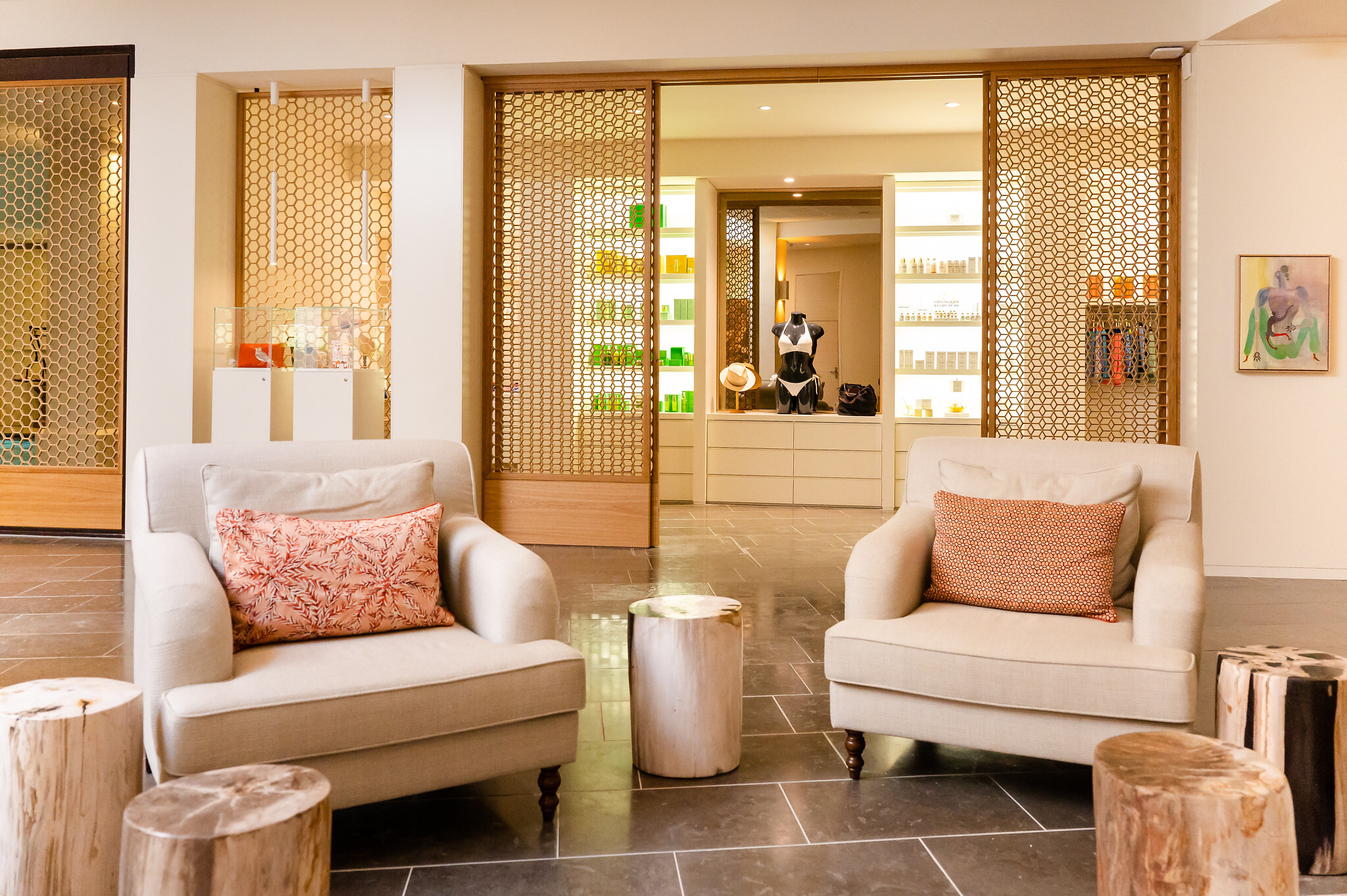
The sun was late to show its face on our second day, so we holed up in the spa. The list of what’s available here would fill the whole of this page but of particular note was incredibly well-equipped changing rooms and the totally personal attention of all the staff. A sauna, hammam steambath, relaxation room and herbal tearoom are just some of what we used and we both enjoyed the decadent pampering of a couple’s full body scrub followed by massage, plus a facial.
Wine growers have been producing in this region since the 13th century. We visited the estate’s Aureto (meaning ‘light breeze’) winery where we did a tasting and enjoyed a range of superb cheeses with rustic bread. Aureto wines are served all over the hotel, and the rose, of course, is exceptionally good.
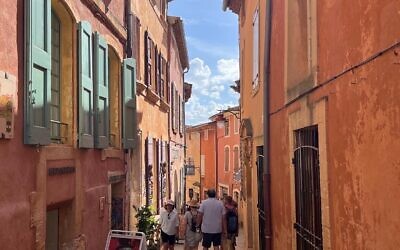 Guests have use of the hotel’s little smart car, so went on a little adventure to Rousillon, just fifteen minutes away, famous for the unique ochre stone in glorious shades of deep orange only found in this part of Provence. We wandered through the pretty village with its plethora of boutiques, art galleries and cafes, plus views of the dramatic Wild West-type landscape from every street corner.
Guests have use of the hotel’s little smart car, so went on a little adventure to Rousillon, just fifteen minutes away, famous for the unique ochre stone in glorious shades of deep orange only found in this part of Provence. We wandered through the pretty village with its plethora of boutiques, art galleries and cafes, plus views of the dramatic Wild West-type landscape from every street corner.
As we head deeper into autumn, heading deep into the Provence countryside could be just the way to stop those summer days drifting away.
Rooms at Coquillade Provence Resort & Spa start at £650 per night including a welcome gift, a selection of the minibar, breakfast, access to the spa, fitness classes, and access to the Aureto Winery throughout your stay.
JEWISH PROVENCE
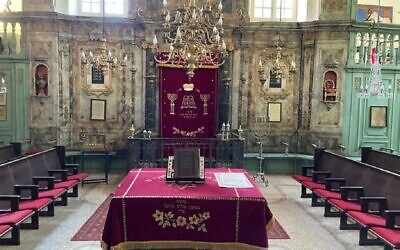
France has the largest Jewish population in Europe and the third largest in the world, after Israel and the United States. Paris is the centre of Jewish life in France today, but for many centuries, that centre was Provence. In the Middle Ages, waves of expulsions swept across Europe, and Jews were forced to either convert to Christianity or leave. The Catholic Church had long-held territory in southern France, mainly in Avignon, where Jews lived in relative freedom under the Pope’s protection. Known as Les Juifs du Pape (the Pope’s Jews), they built thriving communities and even developed a new dialect, shuadit, a mix of Hebrew and Provençal. Antisemitism always rears its ugly head and over time the Pope’s Jews were subject to more restrictions. Eventually, they were allowed to live in only four cities – Avignon, Carpentras, Cavaillon, and l’Isle-sur-la-Sorgue – in small ghettos with gates that locked them in at night. After the French Revolution, Jews were granted full citizenship and started to move to other parts of France.
Avignon Synagogue, built in 1846 on the site of the 13th century original, holds services daily. Next door is a matzo bakery. Nearby is the site of the old ghetto, marked by Rue Juiverie (Jewish Street).
Carpentras synagogue, built in 1343, is the oldest in France and still active. In the basement there are the remains of an ancient mikvah and matzo bakery. Outside the town is a Jewish cemetery dating back to the 14th century.
Cavaillon synagogue has a beautiful interior but is no longer active. It hosts the Musée Judéo-Comtadin, with remnants of a matzo bakery and other historical artifacts.
L’Isle-sur-la-Sorgue no longer has much evidence of its Jewish history, other than a few street names like Rue Hebraique (Hebrew Street). There is also a Jewish cemetery outside of town.
Extracted from An Insider’s Guide to Provence by Keith van Sickle, available from Amazon. keithvansickle.com

Thank you for helping to make Jewish News the leading source of news and opinion for the UK Jewish community. Today we're asking for your invaluable help to continue putting our community first in everything we do.
For as little as £5 a month you can help sustain the vital work we do in celebrating and standing up for Jewish life in Britain.
Jewish News holds our community together and keeps us connected. Like a synagogue, it’s where people turn to feel part of something bigger. It also proudly shows the rest of Britain the vibrancy and rich culture of modern Jewish life.
You can make a quick and easy one-off or monthly contribution of £5, £10, £20 or any other sum you’re comfortable with.
100% of your donation will help us continue celebrating our community, in all its dynamic diversity...
Engaging
Being a community platform means so much more than producing a newspaper and website. One of our proudest roles is media partnering with our invaluable charities to amplify the outstanding work they do to help us all.
Celebrating
There’s no shortage of oys in the world but Jewish News takes every opportunity to celebrate the joys too, through projects like Night of Heroes, 40 Under 40 and other compelling countdowns that make the community kvell with pride.
Pioneering
In the first collaboration between media outlets from different faiths, Jewish News worked with British Muslim TV and Church Times to produce a list of young activists leading the way on interfaith understanding.
Campaigning
Royal Mail issued a stamp honouring Holocaust hero Sir Nicholas Winton after a Jewish News campaign attracted more than 100,000 backers. Jewish Newsalso produces special editions of the paper highlighting pressing issues including mental health and Holocaust remembrance.
Easy access
In an age when news is readily accessible, Jewish News provides high-quality content free online and offline, removing any financial barriers to connecting people.
Voice of our community to wider society
The Jewish News team regularly appears on TV, radio and on the pages of the national press to comment on stories about the Jewish community. Easy access to the paper on the streets of London also means Jewish News provides an invaluable window into the community for the country at large.
We hope you agree all this is worth preserving.
-
By Brigit Grant
-
By Laurent Vaughan - Senior Associate (Bishop & Sewell Solicitors)
-
By Laurent Vaughan - Senior Associate (Bishop & Sewell Solicitors)
-
By Laurent Vaughan - Senior Associate (Bishop & Sewell Solicitors)
-
By Laurent Vaughan - Senior Associate (Bishop & Sewell Solicitors)

